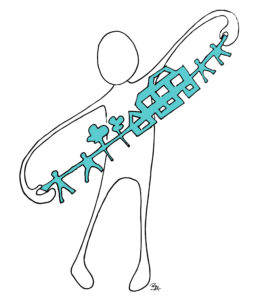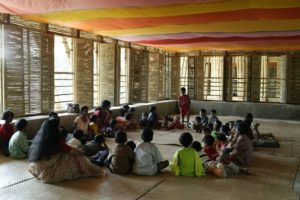
What is Project-Based Learning ?
It is a teaching method in which students take an active role. It increases their interest in a topic by involving them and thus enhancing their motivation. The strategy is based on the idea that the student becomes the protagonist of their own learning.
Although projects must meet certain minimum content requirements, the student has autonomy and decision-making capacity in the development of the projects.
What are the first steps to start with project-based learning?
1_ First, you must choose a project topic. This can come from either the students or the teacher, but the important thing is that it is relevant and appealing to them.
2_ Identify objectives and content. If different subject teachers are involved in the project, the first step is to identify the curriculum content that needs to be addressed and coordinate it.
3_ Create a “Surprising Event” You should create an activity that motivates students to investigate the chosen topic. It should generate questions, doubts, and curiosity. It’s the moment to spark curiosity!
4_ Create a wish list. It is essential to identify the content to be learned, as well as the final product. You can create a list with the students that reflects their “wishes” and learning needs.
5_ Decide on the final product. It is necessary to choose the product through which students will present their learning to others. The final product will determine the competencies the student will acquire.
6_ Choose the competencies. The selection of competencies that students will acquire can be done before choosing the final product, and both steps mutually influence each other. For example, if the final product is creating a multimedia resource in a group, students will acquire different skills than if the final product is an oral presentation by pairs.
7_ Respect the project’s deadlines and phases. It is necessary to establish clear deadlines for each phase of the project. Projects are divided into three distinct phases: an initial stage of research and planning, a second stage of developing the final product, and a final stage of presentation and evaluation.
8_ Set learning goals. This is a fundamental part of the process for students to assess their own progress. Here, we should include the levels of competency achievement and curriculum content.
9_ Provide constructive feedback. Students can engage in temporary group exchanges to provide ideas to their peers. During these exchanges, they should offer feedback on what is good and what they believe needs improvement.
10_ Finally, the public presentation. Students will present their work to others, which will motivate them to achieve a positive outcome and showcase their best work and the effort they have put into it.
.

What do we achieve with all of this?
We help students develop skills and competencies such as collaboration, project planning, communication, and decision-making.
It positively increases motivation, leading to increased class participation and improved willingness to complete tasks.
We also enable students to acquire a greater amount of knowledge and skills when they are engaged in stimulating projects. They acquire new mental skills rather than memorizing data in isolated, unconnected contexts.
Collaborative learning allows students to share ideas, express their own opinions, and negotiate solutions with each other.
And the downside?
Several factors need to be considered. On the one hand, it requires significant effort on the part of the teachers because changing and redefining the educational models we have been using for many years can be challenging for many educators.
It also requires more time to implement and develop, time that is not always readily available.
There may also be some confusion among students since they, in their own way, are accustomed to being taught differently.
All important things require effort, and education is a very important one.
Share this post
Last posts
15 de March de 2022
31 de October de 2021
24 de June de 2020




